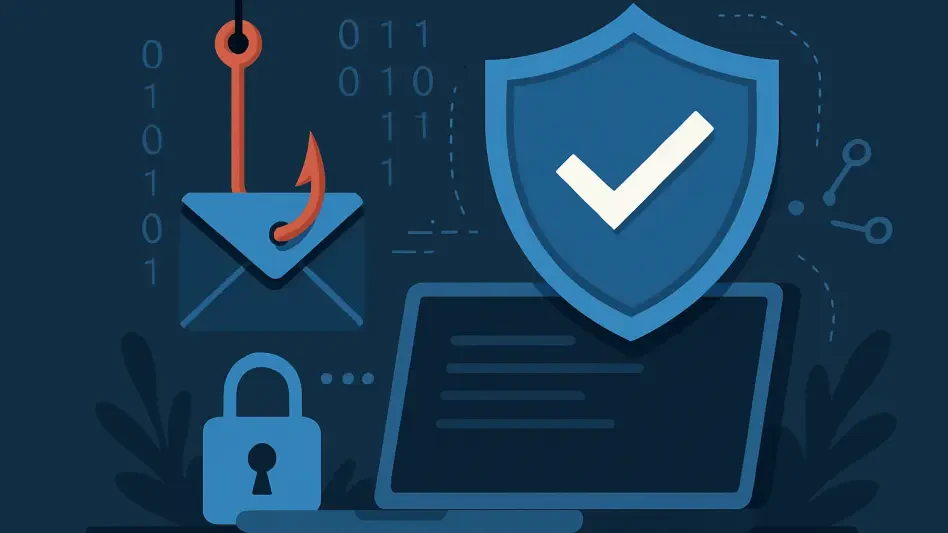Imagine a scenario where a single click on a seemingly harmless email attachment unleashes a cascade of data breaches, costing an organization millions in damages and irreparable reputational harm. Phishing, a pervasive cyber threat, thrives on such human missteps, exploiting trust and curiosity to infiltrate even the most fortified digital defenses. As digital communication and remote work become integral to modern operations, the risk of these attacks escalates, posing a significant challenge across industries. This review delves into the intricate nature of phishing as a human-driven vulnerability, examines the latest trends in attack methods, and evaluates defense strategies that aim to transform weaknesses into organizational resilience. The goal is to provide a comprehensive understanding of current approaches and their potential to evolve in combating this ever-present danger.
Understanding Phishing as a Cybersecurity Threat
Phishing stands as a cornerstone of social engineering, a tactic that manipulates human psychology to gain unauthorized access to sensitive systems or data. Unlike purely technical exploits, this method preys on emotions like fear, urgency, or trust, often tricking individuals into divulging credentials or installing malware. Its significance in today’s digital landscape cannot be overstated, especially with the rise of remote work environments that expand the attack surface through personal devices and unsecured networks.
The emergence of phishing as a dominant threat reflects broader shifts in cybercrime, where attackers prioritize human error over complex hacking techniques. With billions of emails sent daily, a small fraction of successful phishing attempts can yield substantial gains for criminals, making it a low-risk, high-reward strategy. This persistent challenge underscores the need for defenses that address not just technology but also the human behaviors that enable these breaches.
Key Characteristics of Modern Phishing Attacks
Sophistication and Hyperpersonalization
Phishing has undergone a dramatic transformation from broad, easily detectable scams to intricate, tailored assaults that leverage personal information. Attackers now harvest data from social media, public records, or prior breaches to craft messages that appear legitimate, often mimicking trusted contacts or organizations. This hyperpersonalization increases the likelihood of deception by aligning content with the victim’s context or interests.
Beyond mere customization, these attacks exploit psychological triggers such as urgency or authority to prompt immediate action. A fake email from a supposed CEO demanding urgent fund transfers, for instance, can pressure employees into bypassing standard protocols. Such tactics highlight how phishing has evolved into a calculated manipulation of human instincts, challenging traditional security measures.
The impact of this sophistication is evident in the rising success rates of targeted campaigns, often referred to as spear phishing. By focusing on specific individuals or roles within an organization, attackers maximize their chances of breaching high-value targets. This shift necessitates a deeper understanding of user behavior to counter the nuanced strategies employed by cybercriminals.
Multichannel Attack Methods
No longer confined to email, phishing has expanded across diverse communication platforms, amplifying its reach and effectiveness. SMS-based attacks, known as smishing, deliver fraudulent links or requests via text messages, exploiting the immediacy and personal nature of mobile communication. Similarly, vishing, or voice phishing, uses phone calls to impersonate legitimate entities, often pressuring victims into sharing sensitive details.
Social media platforms and messaging apps have also become fertile ground for phishing, with attackers crafting fake profiles or urgent messages to lure users into traps. These multichannel approaches allow cybercriminals to bypass email filters and other conventional safeguards, as many users remain less vigilant on non-traditional platforms. The diversity of attack vectors complicates detection and response efforts significantly.
This trend toward multifront assaults reveals a strategic adaptation by attackers to exploit the interconnected nature of modern communication. As users juggle multiple channels daily, the risk of overlooking a malicious interaction grows, emphasizing the need for comprehensive security awareness across all touchpoints. Defense mechanisms must evolve to address this fragmented landscape effectively.
Emerging Trends in Phishing Threats
The landscape of phishing continues to shift with attackers adapting to societal changes and technological advancements. Exploitation of current events, such as natural disasters or economic crises, allows cybercriminals to craft timely, emotionally charged messages that resonate with victims. These context-driven campaigns often see heightened success due to their relevance and ability to evoke immediate concern.
Business email compromise (BEC) represents another growing tactic, where attackers impersonate executives or vendors to initiate fraudulent transactions. By leveraging stolen credentials or spoofed domains, these schemes target financial processes, often resulting in significant monetary losses. The precision and insider knowledge simulated in BEC attacks make them particularly insidious and hard to detect.
Additionally, the integration of advanced technologies like artificial intelligence enables attackers to automate and scale phishing efforts with unprecedented efficiency. From generating convincing fake emails to mimicking voices in vishing calls, such tools lower the barrier for launching sophisticated campaigns. Staying ahead of these innovations remains a critical challenge for cybersecurity professionals in the ongoing battle against phishing.
Sector-Specific Impacts and Vulnerabilities
Phishing’s impact varies widely across industries, with each sector facing unique risks tied to its operational and data characteristics. In healthcare, for instance, attackers target patient records and billing systems, exploiting high-pressure environments where staff may prioritize speed over scrutiny. Breaches in this field can lead to severe privacy violations and disrupted care delivery.
Finance and professional services encounter phishing schemes aimed at monetary gain, often through BEC or credential theft to access accounts. Meanwhile, educational institutions, with diverse and often less tech-savvy user bases, are susceptible to ransomware delivered via phishing, disrupting learning and administrative functions. These examples illustrate how attack strategies are tailored to exploit specific workflows and priorities.
Critical infrastructure and manufacturing sectors face threats of operational sabotage or intellectual property theft, where a successful phishing attempt could halt production or compromise national security. The varied nature of these vulnerabilities highlights a pressing need for sector-specific defense mechanisms that address distinct risks rather than relying on generic solutions. Customized approaches are essential to mitigate the tailored threats each industry encounters.
Challenges in Combating Phishing
One of the foremost hurdles in defending against phishing lies in the enduring reality of human error, which no amount of training can entirely eliminate. Even well-informed individuals can fall prey to momentary lapses in judgment, especially under stress or distraction. This inherent unpredictability complicates efforts to secure organizations solely through user education.
Rapidly evolving attack methods further exacerbate the issue, as cybercriminals continuously refine their tactics to evade detection. Technical solutions, while vital, often lag behind these innovations, unable to address the psychological manipulation at the core of phishing. Relying on technology alone leaves gaps that attackers are quick to exploit with novel approaches.
Cultural and organizational barriers also impede progress, as many entities struggle to prioritize security amid competing business demands. Resistance to change, lack of leadership buy-in, or punitive responses to mistakes can discourage proactive engagement from employees. Overcoming these systemic challenges requires a holistic shift in mindset, integrating security into the fabric of organizational values and daily practices.
Human-Centric Defense Strategies and Future Outlook
Addressing phishing demands a pivot toward human-centric strategies that position employees as active defenders rather than potential liabilities. Continuous security awareness training, tailored to real-world scenarios, can cultivate critical thinking and vigilance among staff. Engaging, frequent sessions ensure that lessons remain relevant and top of mind, reducing susceptibility to deception over time.
Simulated phishing campaigns offer a practical avenue to test and reinforce learning, providing constructive feedback without punitive consequences. Coupled with a non-punitive reporting culture, where employees feel safe to flag suspicious activity, organizations can turn potential breaches into opportunities for improvement. Leadership advocacy plays a pivotal role here, embedding security as a core priority across all levels.
Looking ahead, integrating technical safeguards like multifactor authentication and zero-trust architectures bolsters human defenses by adding layers of protection. These frameworks, combined with evolving training methodologies, promise a future where resilience against phishing is built into organizational DNA. The focus must remain on empowering individuals while adapting to emerging threats through a balanced, proactive approach.
Summary and Assessment of Phishing Defense
Reflecting on the insights gathered, it becomes clear that phishing remains a formidable challenge due to its exploitation of human behavior, a factor that technical solutions alone cannot fully address. Current defense strategies show varying degrees of effectiveness, with human-centric approaches like ongoing training and cultural shifts demonstrating significant potential to reduce risks. The review highlights that transforming vulnerabilities into strengths hinges on viewing employees as assets in the security framework.
The analysis of sector-specific impacts underscores the necessity for tailored defenses that account for unique operational contexts. While modern phishing attacks grow in sophistication and scope, the integration of advanced technologies and adaptive strategies offers hope for more robust protections. Overall, the assessment points to a promising trajectory for phishing defense, provided organizations commit to evolving their approaches in tandem with emerging threats.
In wrapping up this evaluation, the path forward involves a renewed emphasis on building resilience through actionable measures. Organizations are encouraged to invest in continuous education, foster open reporting environments, and leverage cutting-edge tools to support human defenses. The journey to counter phishing demands a sustained effort to anticipate attacker innovations while prioritizing a culture of security awareness, ensuring that past vulnerabilities pave the way for stronger, more adaptive protections.








